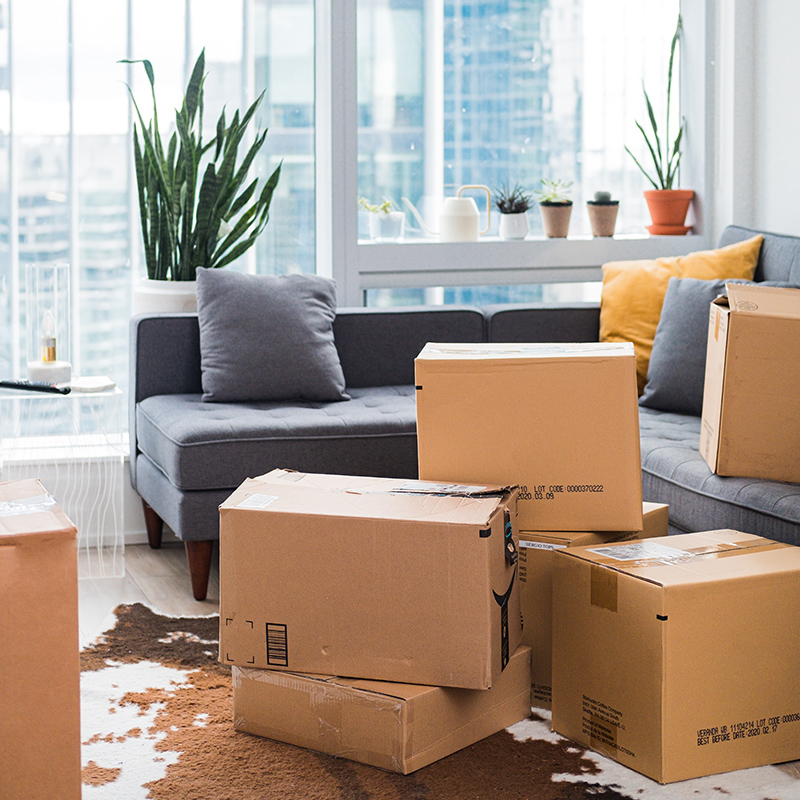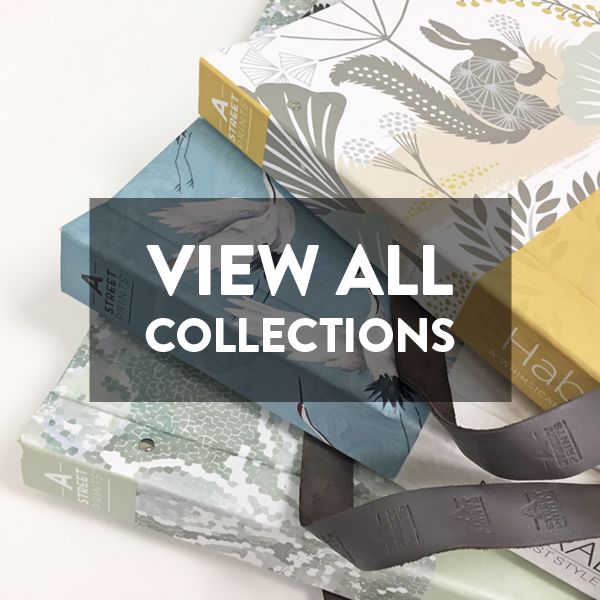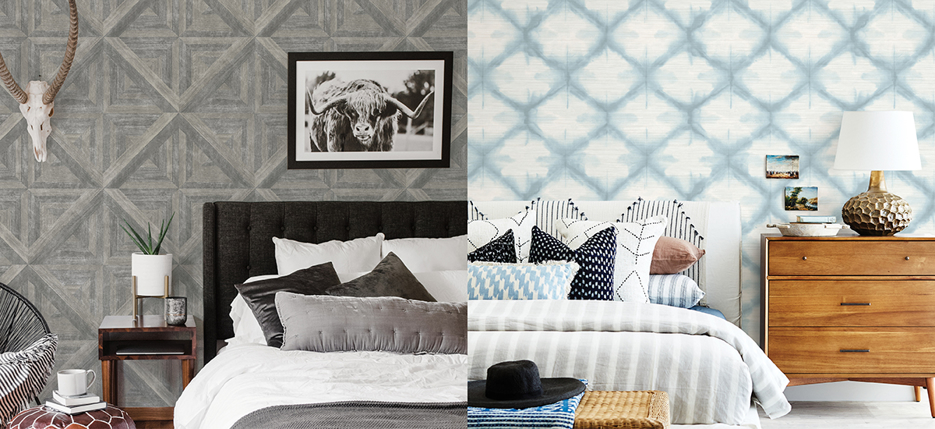Every design enthusiast dreams of the day they’re able to style their own space. We fervently collect design inspiration and catalogue the styles that speak to us (thanks, Pinterest!). We fantasize about floor plans and furnishings as, room by room, we define our vision.
Now, finally, it’s time to put all your dreaming and scheming to good use! There’s just one factor you hadn’t planned for: your new roommate.
Whether with a significant other or roommate (or several), moving in together is becoming the new norm. And while cohabitation undoubtedly changes your design vision, we argue it’s for the best! By blending multiple styles, you create a dynamic design unique to your home.
Phase One: Consolidation
More likely than not, both you and your significant other or roommate each have enough stuff to fill a household. Before moving in together, you’ll need to figure out whose stuff is making the leap to your shared home.
Start by making a list of your big-ticket items. From there, agree on the number of non-negotiable pieces – items you can’t bear to part with - each of you are allowed. Keep in mind, these non-negotiables are key to making your partner feel at home. Regardless of how you feel about their selections, complaining will only make moving in contentious. A happy home, we believe, is worth making a few style concessions for. ‘What if I HATE something my partner’s chosen?’ When in doubt, talk it out. Explain why you don’t like their selection, citing reasons beyond the shallow, like it not being your taste. The same applies to your partner: they need to offer a compelling, non-superficial reason - like finding it during a once-in-a-lifetime trip - for keeping something. Peace-Keeping Tip: Equal Exchanges |  |
With non-negotiables established, it’s time to sort through items you both own. Depending on space, you might not need or be able to take both. If you’re having trouble agreeing, the choice comes down to quality, condition, and size:
- Is one option made of better material and likely to last longer?
- Is one in better shape than a worse-for-wear counterpart?
- Will one option fit better in your new space?
Peace-Keeping Tip: Be Prepared to Compromise
Even when considering these factors, you’re not always going to see eye-to-eye. However, simple cosmetic changes could be a game-changer. If you can’t agree on a piece as-is, would a new finish or slipcover save it?
Still not enthused by either option? If you don’t need it right away and can afford to replace it, pick out something new together once you’ve settled in!
That takes care of the essentials… but you probably still have a bunch of stuff. Which means it’s time to par down your décor.
Remember, you’re blending two styles and households into one. To successfully create a design that speaks to both parties, you’ll each need to create space for the other’s décor.
This is a great opportunity to take stock of what you have. Oftentimes we amass clutter: gifts from loved ones, mementos from the past, supplies from unfinished projects. Less is more when you’ve moving. If you no longer love it, don’t take it with you.
What’s left are belongings that still spark joy; box these up and take them with you. If you want to be extra proactive, separate out your best of the best items. In the event there’s less space for both of your décor than anticipated, this will help you prioritize your absolute favs.
Phase Two: Envisioning Your Blended Style
Now that you’ve finalized the major pieces, it’s time to develop your joint interior design. Roughly knowing what your space will look like before moving will help diffuse any potential tension when setting up your home.
By now, you probably have a good sense of your partner’s tastes. You may also already have ideas on how to combine your furniture and décor. Before mapping out your design plans, however, talk with your partner about what they’re looking for in each space.
 | For example, is your partner a big entertainer who wants dedicated formal dining space? Or do they prefer a more flexible, expanded living area with a small breakfast nook? Are they catching up on their favorite shows most nights, or cozying up with a good book? Do they need a dedicated work area for hobbies or just easily accessible organizing solutions? Form and functionality are just as important as fashion; if you’re on the same page regarding the purpose and general feel of your space, it’ll be that much easier to blend your styles together. |
With a balance of style and livability in place, it’s time to map out your vision! Talk about your design ideas with your SO or roommate; if they’re a visual person, consider creating an inspiration board (again, Pinterest for the win!) or a digital rendering of your future space. This can be an especially helpful and low-stakes way to explore bold design choices or decide on several options.
As you’re sketching out your style plans, these considerations will help you create a balanced design:
- When working with mismatched furniture, be mindful of both shape and scale. A common silhouette makes it easier to blend different pieces. Conversely, mixing and matching the same type of furniture, like kitchen chairs, is most successful when they have roughly the same dimensions and scale.
- Struggling to find a place in your design for a unique character piece? Make it the focal point! Not only will it add interest to your space, this will look much more intentional and refined than trying to ‘make it work’ in conjunction with other elements.
- Color is a powerful unifier. You’ll create a more cohesive design, especially when blending different tastes, by sticking to a limited color palette. Repeat your chosen hues throughout your space for a consistent, harmonious look.
- Are you working with two very distinctive styles? Utilize the 80/20 rule and let one style take center stage while the second accents the space. Switch up which style takes the lead in different rooms for a home that feels uniquely yours and your partners.
Phase Three: Bringing Your Design to Life
With your belongings packed and designs outlined, now all that’s left is moving in!
Unfortunately, no amount of planning can cancel out the stress of moving. Your preparation and design diligence will make settling in much easier, but also, take your time! Creating a home is a marathon, not a sprint; you’ll burn out trying to make everything polished and put together all at once.
Instead, focus first on rooms with either the greatest functional or emotional payoff. For instance, having an organized kitchen can help diffuse the strain of unpacking and living off take-out for every meal. In addition, an orderly, peaceful bedroom – bed made, clothes unpacked – can be instrumental to unwinding after the long days.
Taking time to settle in before finalizing your design schemes can also help you better utilize your home’s footprint. On paper, your arrangements might look perfect. However, it’s very likely you’ll make changes once you’re in the space.
For example: you enjoy starting the day drinking coffee in your favorite armchair. After a few weeks, you notice the opposite side of the room is sunnier in the morning. You might rearrange the furniture so your armchair sits in the morning sun, allowing you to enjoy your coffee even more.
Lived-in rearrangements can create additional opportunities for styling, like a newly revealed accent wall or unexpected floorspace. Capitalize on these happy accidents by bringing in new décor that you and your partner choose together. Wallpaper easily and instantly transforms a bare feature wall, while an area rug extends color and style throughout your space.
Over time, your interior design preferences will naturally evolve, as will the functional aspects of your space. What won’t change, however, is how rewarding it is to create a home - together.
Have you and your partner moved in together and created an entirely unique, blended style for your shared home? We’d love to hear your challenges, successes, and questions in the comments below!
At A-Street Prints, we understand exactly what it takes to create a beautiful home. Great design has the power to utterly transform your space, and our design experts are passionate about facilitating only the more captivating and innovative home transformations.
With a legacy in wallpaper, A-Street Print’s trend-setting designs set the foundation for a style and home that’s uniquely yours.







